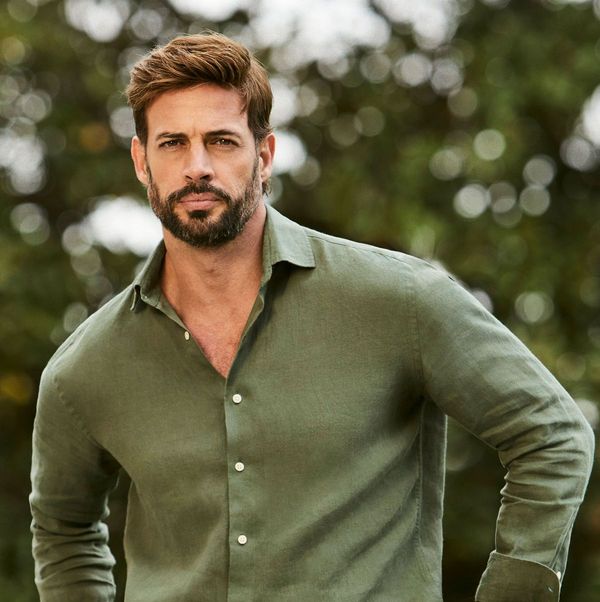
David Byrne glides rather than explodes into his new position as artistic director of the Royal Court. The first major play under his aegis is a mild surprise from the man who at the New Diorama brought on to the stage the addictive high jinks of Operation Mincemeat and the melancholy grace of For Black Boys Who Have Considered Suicide When the Hue Gets Too Heavy. Katie Mitchell’s production of Bluets is cool and accomplished. More intriguing than disturbing. Scattered with stardom: Ben Whishaw appears alongside Emma D’Arcy and Kayla Meikle.
Bluets brings a mood and technique unfamiliar to the Court – and the question of what counts as new writing. Developed at Deutsches Schauspielhaus in Hamburg, it is an adaptation by Margaret Perry of Maggie Nelson’s brooding 2009 memoir. Perry has trimmed and reordered Nelson’s thoughts on the colour blue – its aesthetic allure, its emotional tug – which include reactions to the end of a love affair and to a friend’s catastrophic accident. This is autobiography steered by an obsession that has something in common with religion and (perhaps not so different) conspiracy theory.
Passing phrases between them, rather than responding to each other, D’Arcy, Meikle and Whishaw are level, inward: three controlled registers of one voice, sometimes near to the whisper of the true crime podcast. They are also part of the play’s visual machinery. Nowadays, it is quite hard to go to the theatre without seeing a film, most recently in Jamie Lloyd’s Romeo & Juliet: I am quite looking forward to a countermovement and some stripped-down staging. Still, Mitchell, who pioneered a mixing of screen and stage in her 2006 stage version of The Waves, creates a singular effect. Working with film-maker Grant Gee and video designer Ellie Thompson, she uses prerecorded footage and live video, with the actors manipulating materials – fabric for a bed, a cannula inserted into a hand – for images projected on to a screen behind them. This is at one go a rehearsal and a finished play, a film shoot and a finished movie: the raw elements of a life and the story we tell about them.
Byrne, himself a playwright, has talked of making his Royal Court a “writers’ theatre” run by writers, and has appointed a clutch of dramatists as artistic associates. That aim is not exactly fulfilled in Bluets, but the drama is porous, providing a new angle on the offstage world. My companion and I noted that the pinko Court audience were largely clad in blue (the UK’s favourite colour). Not trivial, this, but not carrying “the incendiary potential” at which Byrne also aims. For that, you have to look elsewhere.
People, Places & Things hits the stage like a blow on the head. It is nine years since Duncan Macmillan’s play first made addiction seem to be a key to all psychologies – and proved that Denise Gough is an essential actress (she thinks that when it comes to the “actor” word, “-ess” is more: “I would be no less afraid of a lioness than a lion”). Jeremy Herrin’s tremendous production, with tremendous Gough, is even better second time around.
Watching again, I realised how rare it is to see a really intelligent character on stage. Not someone proving his cleverness by delivering a lecture or demolishing an adversary with a smart retort. Not a woman wearing specs. This heroine – who checks into rehab then ducks and dives, resisting and seeming to embrace treatment, seducing and maddening everyone around her – is truly quick, truly probing, putting questions before the audience formulates them: is there, she asks, a contradiction in a scientist wearing a crucifix?
Gough’s is by far the most developed character – this is one of the few plays that makes sense of making its heroine an actress, with her multifacetedness and swift changes. Yet she is not surrounded by dimwits constructed to flatter her brain. Oh, says her doctor, having been subjected to a barrage of observations about Foucault: “So postmodernism made you an addict?” Sinéad Cusack, who doubles to great effect as a very unexpected mother, plays the doc with consummate poise and wit. Actually, there is more humour throughout than I remembered. Gough’s insolent puncturing of piety is often comic. As is the man in rehab who offers to cheer her up with a phone picture of his dog: she is called Eleanor.
Macmillan has made small changes: there are mentions of Covid and Brexit. Herrin’s full-throttle production repeats its enveloping force. Gaps suddenly open in the white-tiled room designed by Bunny Christie. James Farncombe’s white lighting occasionally blacks out. Gough lookalikes swarm around alongside the original. It is as if her fracturing brain has captured the stage. She herself is as ferocious and meticulous as ever. In her jaggedness: her body might have been dismantled, her arms and legs put on back to front. In her tiny fixations: she picks at her hair (not derangedly plucking, as would a lesser actress) as if making sure it is growing out, not inwards. She disarms without charming. And steers audiences to consider a dark truth: that in a world full of horrors an addict may be behaving logically.
Star ratings (out of five)
Bluets ★★★
People, Places & Things ★★★★★







